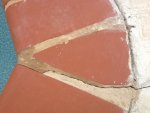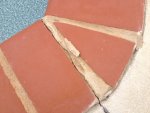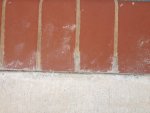Hi all!,
I am having cracking issues with the mortor between my bricks on the coping of the pool.
The pool is 2 1/2 years old, the builder has already come out twice to "fix" the cracking. Their pool at the store (on display) is 8 yeras old and has no signs of the issues I have.
What do you think? Poor Mixing (wrong consitantcy?) Poor cleaning/prep or shifting? Also how can I remove the concrete that they have left on the bricks? I am assuming muruatic acid (with a brush?), however if I do the small section will I end up having to go all around the pool to keep the brick color the same?
Thank you - Jim
I am having cracking issues with the mortor between my bricks on the coping of the pool.
The pool is 2 1/2 years old, the builder has already come out twice to "fix" the cracking. Their pool at the store (on display) is 8 yeras old and has no signs of the issues I have.
What do you think? Poor Mixing (wrong consitantcy?) Poor cleaning/prep or shifting? Also how can I remove the concrete that they have left on the bricks? I am assuming muruatic acid (with a brush?), however if I do the small section will I end up having to go all around the pool to keep the brick color the same?
Thank you - Jim




